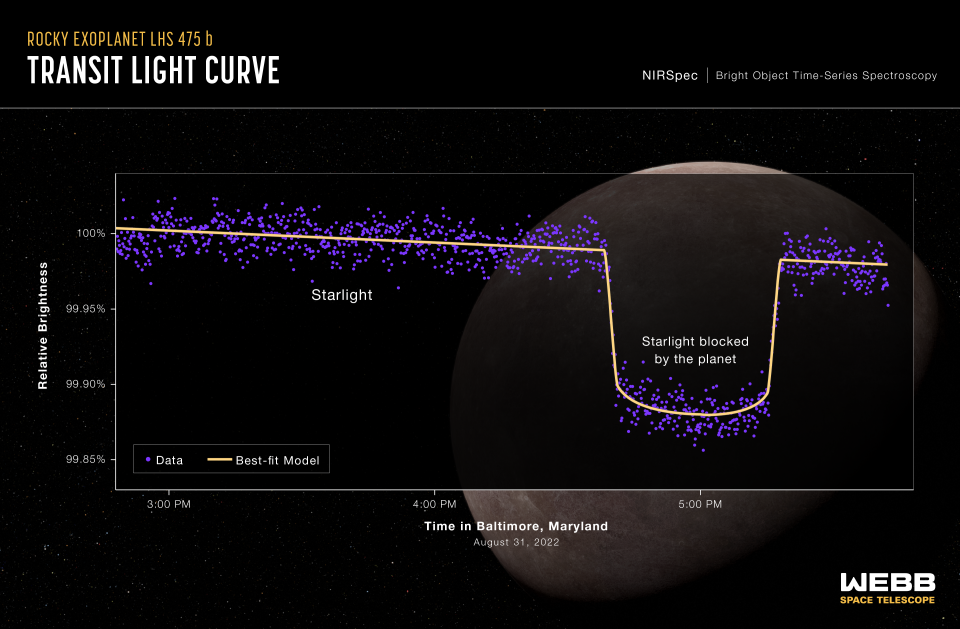James Webb Space Telescope confirms its first exoplanet, one almost the same size as Earth
The James Webb Space Telescope has captured dazzling images of stars and galaxies throughout the universe, but it achieved another first recently by discovering its first exoplanet.
The planet, named LHS 475 b, is outside our solar system but shares similar qualities with Earth, NASA announced Wednesday. Its discovery first came with the help of NASA's Transiting Exoplanet Survey Satellite, which hinted at the planet's existence before the Webb Telescope confirmed it with its near-infrared spectrograph.
"There is no question that the planet is there. Webb’s pristine data validate it," Jacob Lustig-Yaeger, lead researcher from the Johns Hopkins University Applied Physics Laboratory, said in a statement.
Habitable planet? NASA just found a planet almost the size of Earth and it's in the habitable zone of a star
Comet: A newly discovered green comet is nearing Earth and it may be visible to the naked eye

What is an exoplanet?
Exoplanets are any planets outside our solar system that orbit a star. NASA says exoplanets are made up of elements similar to planets in our solar system, but their mixes of elements could differ.
What's everyone talking about? Sign up for our trending newsletter to get the latest news of the day
What to know about LHS 475 b
The planet discovered by the Webb telescope is almost the same size as Earth; its diameter is 99% the same as our planet.
It's a terrestrial, rocky planet about 41 light-years from Earth in the constellation Octans. It differs from Earth in that it completes an orbit in just two days and is hundreds of degrees hotter than Earth. It's also the closer to its star than any planet in our solar system is to the sun, although its star is less than half the temperature of the sun.

A planet with no atmosphere?
What researchers don't know is whether the planet has an atmosphere.
"The telescope is so sensitive that it can easily detect a range of molecules, but we can’t yet make any definitive conclusions about the planet’s atmosphere," said Erin May, also a researcher with the Johns Hopkins University Applied Physics Laboratory.
Researchers said they have been able to rule out it having a thick methane-dominated atmosphere, but it's possible the planet either has no atmosphere or a pure 100% carbon dioxide atmosphere. If researchers could confirm clouds exist on LHS 475 b, they may conclude the planet is similar to Venus, which has a carbon dioxide atmosphere and thick clouds.
"These first observational results from an Earth-size rocky planet open the door to many future possibilities for studying rocky planet atmospheres with Webb," said Mark Clampin, astrophysics division director at NASA headquarters. "Webb is bringing us closer and closer to a new understanding of Earth-like worlds outside our solar system, and the mission is only just getting started."
Follow Jordan Mendoza on Twitter: @jordan_mendoza5.
This article originally appeared on USA TODAY: James Webb Space Telescope discovers its first exoplanet, LHS 475 b

